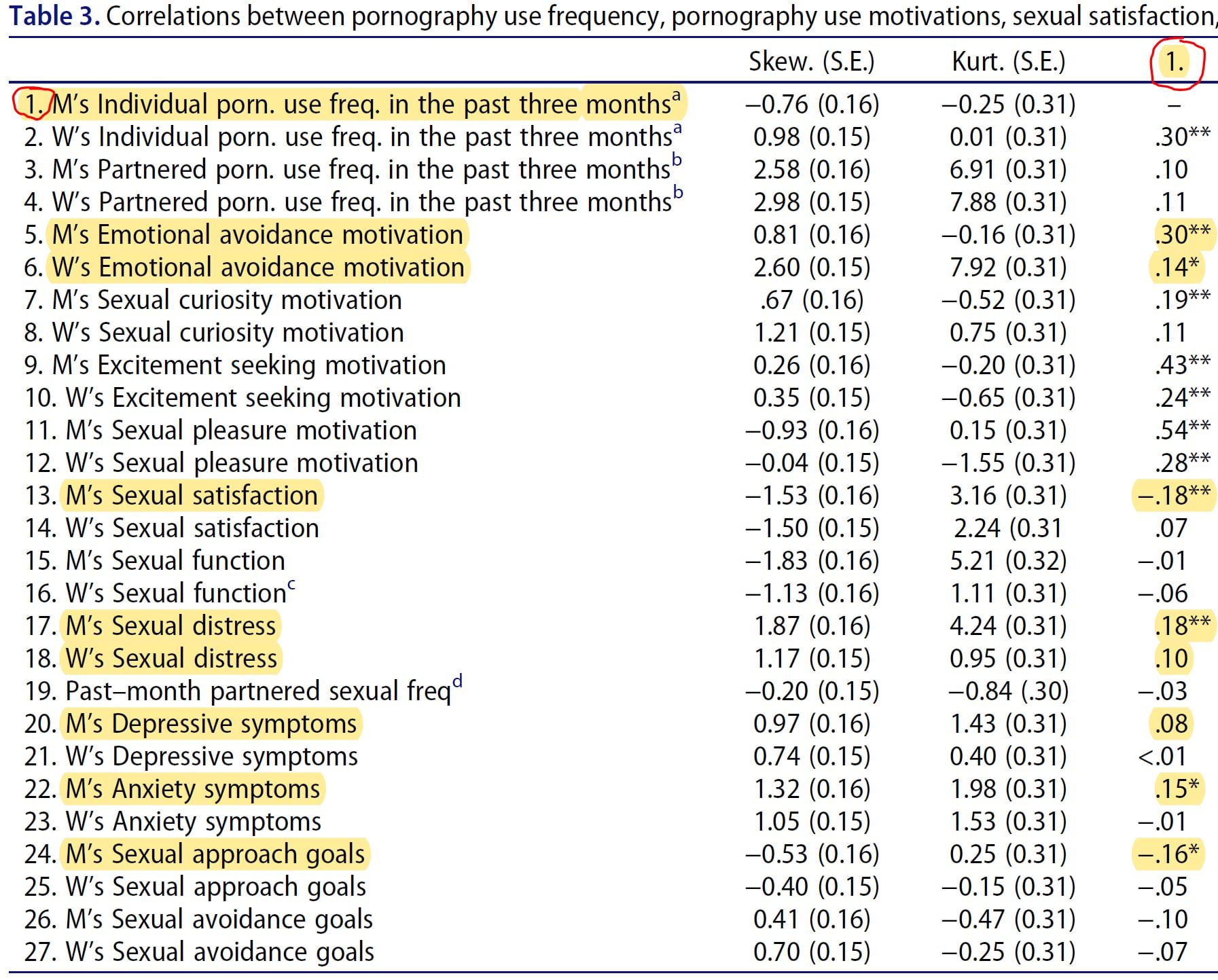COMMENTS: Nationally representative studies usually report that the % of women in long-term relationships that regularly use porn is relatively quite low. So, findings that higher porn use for females is related to better outcomes is often based on a small percentage of females who do use porn on a consistent basis. This makes these findings less interesting to the general public than their authors would sometimes have us believe.
More interesting are the results for men, as the vast majority of men use porn. The current study on couples reported that that the man’s porn use was positively related to his own poorer sexual satisfaction, anxiety, depression, greater sexual distress, and emotional avoidance. The man’s porn use was also negatively related to sexual goals (avoidance/approach).
~~~~~~~~~~~~~~~~~~~~~~~~~~~~~~~~~~~~~~~~~~~
J Sex Res . 2021 Mar 16;1-15.
doi: 10.1080/00224499.2021.1893261.
Beáta Bőthe 1 , Marie-Pier Vaillancourt-Morel 2 , Sophie Bergeron 1
PMID: 33724108
DOI: 10.1080/00224499.2021.1893261
Abstract
Pornography use is prevalent, even among partnered individuals. Although pornography use motivations represent key predictors of sexual behaviors, prior studies only assessed the associations between pornography use frequency and sexual wellbeing, with mixed results. This cross-sectional dyadic study examined the associations between partners’ individual and partnered pornography use frequency, motivations, and sexual wellbeing. Self-report data from 265 couples (Mage_men = 31.49 years, SD = 8.26; Mage_women = 29.36 years, SD = 6.74) were analyzed using an actor-partner interdependence model. Men’s greater emotional avoidance motivation was related to their own lower sexual function (β = -.24, p = .004) and greater sexual distress (β = .19, p = .012), while their higher sexual curiosity motivation was related to higher partnered sexual frequency (β = .15, p = .031), their own greater sexual satisfaction (β = .13, p = .022), sexual function (β = .16, p = .009), and lower sexual distress (β = -.13, p = .043). Women’s higher partnered pornography use frequency was associated with their own greater sexual function (β = .15, p = .034) and lower sexual distress (β = -.14, p = .012). Additionally, women’s higher individual pornography use frequency (β = .33, p < .001) and lower sexual pleasure motivation (β = -.35, p = .002) were associated with higher partnered sexual frequency. No partner effects were observed. Findings highlight that women’s pornography use frequency and each partner’s motivations might play crucial roles in couples’ sexual wellbeing.
